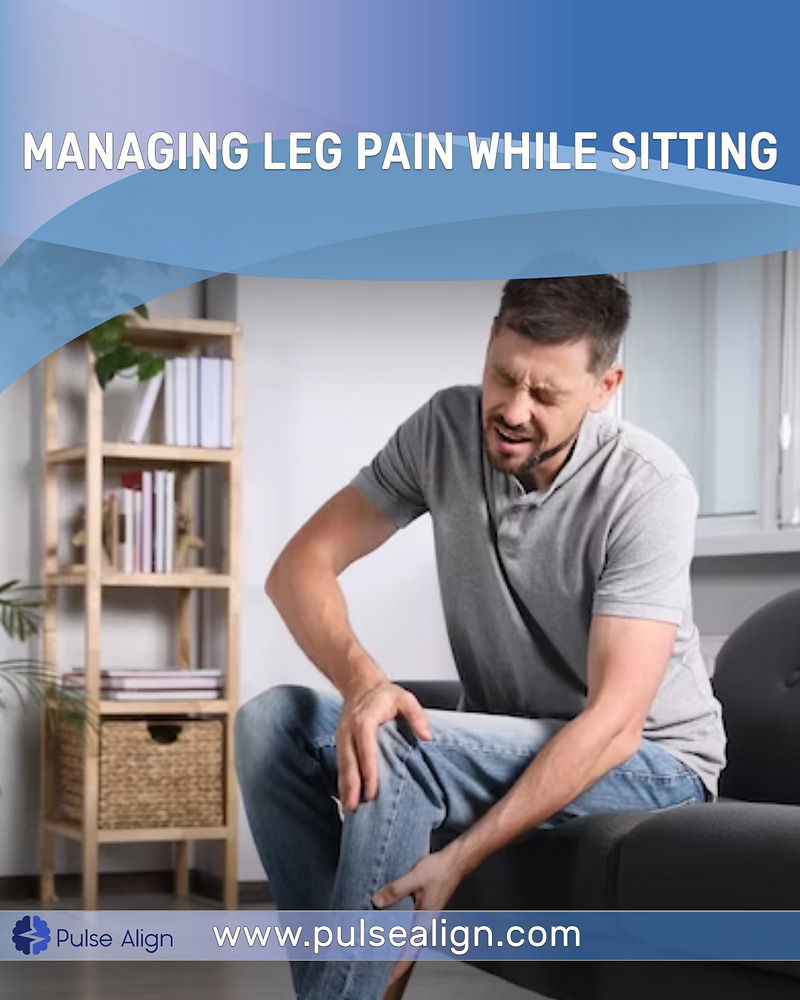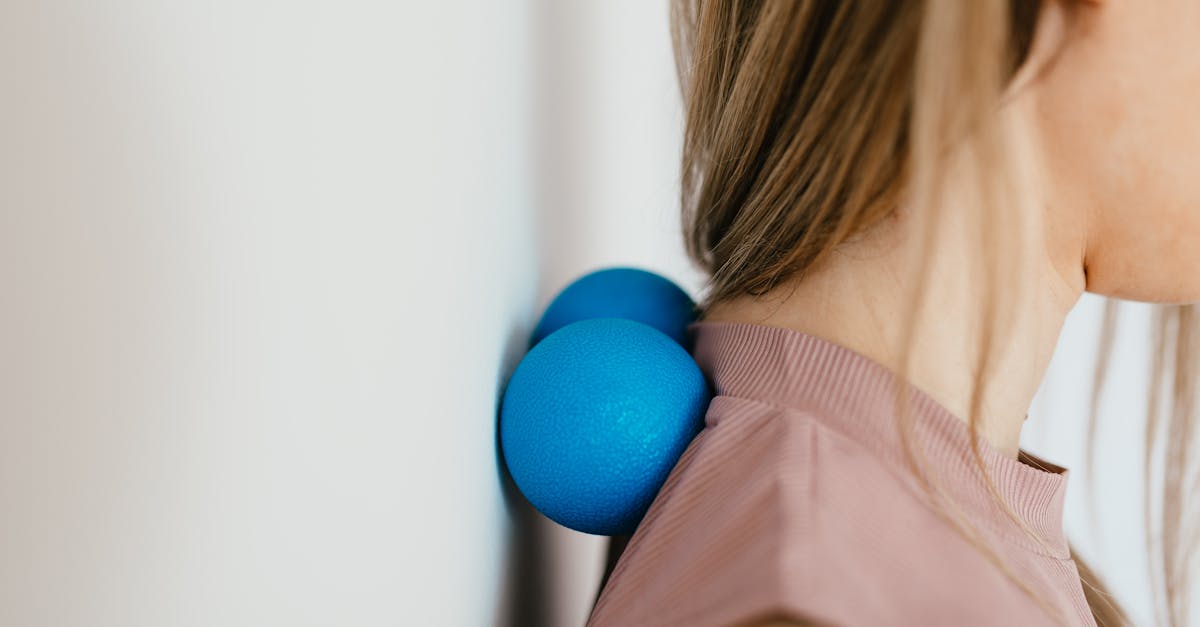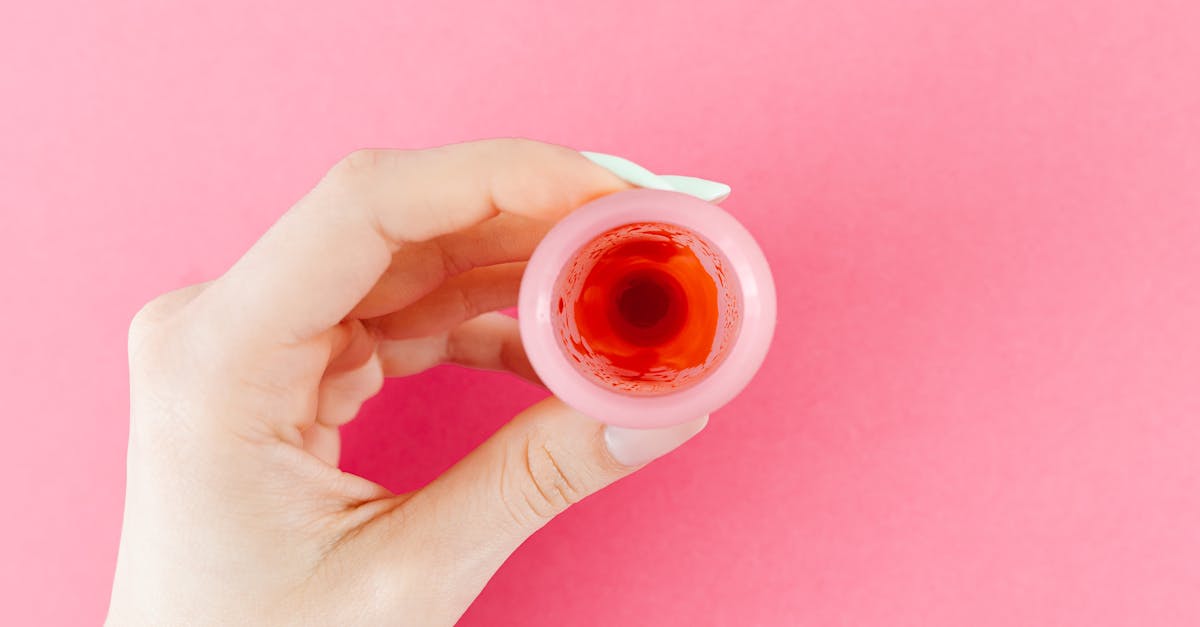Leg pain while sitting is a common issue that affects many individuals, whether it’s due to prolonged periods of sitting at work, poor posture, or underlying health conditions.
Leg Pain has been reported by 76% of individuals in the working population who mainly work in sitting postures, and 70% of those predominantly working in standing postures, according to data analysis.
In this comprehensive guide, we’ll explore the causes of leg pain while sitting, traditional approaches, and the potential benefits of a holistic solution like Press Align. By addressing root causes rather than just symptoms, Pulse Align aims to promote a natural return to normal function and overall well-being.
Understanding Leg Pain While Sitting
Causes of Leg Pain While Sitting
Leg pain while sitting can be attributed to various factors, including poor circulation, nerve compression, muscle tightness, and joint issues. Prolonged periods of sitting can lead to reduced blood flow to the legs, causing discomfort and pain. Additionally, poor posture may contribute to muscle imbalances and increased pressure on nerves, exacerbating the problem.
Here are some common reasons for leg pain while sitting:
Poor Posture: Incorrect sitting posture can lead to strain on muscles and joints, causing pain. Slouching or sitting for extended periods without proper support can contribute to discomfort.
Muscle Strain: Overuse or strain of leg muscles, especially if you’ve been engaging in intense physical activity or sitting in a particular position for too long, can lead to pain.
Nerve Compression: Conditions such as sciatica, where the sciatic nerve is compressed, can cause pain in the legs. Prolonged sitting can exacerbate nerve compression issues.
Deep Vein Thrombosis (DVT): This is a condition where blood clots form in deep veins, often in the legs. Prolonged periods of sitting, such as during long flights, can increase the risk of DVT.
Peripheral Artery Disease (PAD): Reduced blood flow to the legs due to narrowed arteries can cause pain, especially during periods of inactivity such as sitting.
Herniated Disc: A herniated or slipped disc in the spine can press on nerves that travel down the legs, leading to pain that may worsen when sitting.
Osteoarthritis: Degeneration of joint cartilage, especially in the knees, can lead to pain, and sitting for extended periods may exacerbate this discomfort.
Injuries: Previous injuries to the legs, such as fractures or sprains, may cause pain when sitting.
Lack of Movement: Sitting for prolonged periods without breaks can lead to reduced blood circulation and muscle stiffness, contributing to leg pain.
Inadequate Foot Support: Improper footwear or lack of support for the feet can lead to leg pain, especially if you’re sitting for an extended duration.
The Impact of Leg Pain While Sitting on Daily Life
The consequences of persistent leg pain while sitting extend beyond mere discomfort. It can negatively affect productivity at work, lead to decreased quality of life, and impact overall well-being. Addressing the root causes of this pain is crucial for long-term relief and improved quality of life.
The Holistic Approach with Pulse Align
Understanding Pulse Align
Pulse Align takes a holistic approach to managing leg pain while sitting by focusing on the alignment of the body’s energy systems. This approach aims to identify and address the root causes of pain rather than merely alleviating symptoms.
Addressing Root Causes with Pulse Align
Pulse Align distinguishes itself by targeting the underlying imbalances in the body’s energy flow, promoting self-healing mechanisms. By addressing root causes such as energy blockages and imbalances, Pulse Align aims to provide a natural and sustainable solution to leg pain while sitting.
Potential Benefits of Pulse Align in Managing Leg Pain While Sitting
Pulse Align incorporates technologies that stimulate blood flow and improve circulation in the affected areas. Improved blood circulation helps deliver oxygen and nutrients to tissues, promoting healing and reducing discomfort associated with leg pain while sitting.
Muscle Relaxation and Tension Release
The technology used in Pulse Align assists in relaxing tight muscles and releasing tension. This can be particularly beneficial for individuals experiencing leg pain due to muscle imbalances or spasms caused by prolonged sitting.
Pulse Align aims to alleviate nerve compression by promoting the natural flow of energy throughout the body. This can be instrumental in reducing pain and discomfort associated with nerve-related issues.
Lifestyle Changes in Managing Leg Pain While Sitting for Improved Well-Being
Making simple adjustments to one’s sitting posture and workspace ergonomics can significantly contribute to the prevention of leg pain. Ensuring a proper chair height, maintaining good posture, and taking regular breaks to stretch can make a substantial difference.
Incorporating Movement into Daily Routine
Regular physical activity, even in the form of short walks or stretching breaks, can help improve circulation and reduce the risk of leg pain while sitting. Integrating movement into the daily routine is essential for maintaining overall health and well-being.
Conclusion: Inviting Readers to Explore Pulse Align
In conclusion, managing leg pain while sitting requires a comprehensive approach that goes beyond symptom relief. Pulse Align offers a holistic solution by addressing the root causes of leg pain and promoting a natural return to well-being. While complete healing is not guaranteed, the potential benefits of Pulse Align, coupled with lifestyle changes, can contribute to improved overall health. Consider exploring Pulse Align for a personalized approach to managing leg pain and enhancing your well-being through a natural return to normal function.
Reference
Kim, K. (2024). Leg swelling and pain: Leg swelling and pain while sitting or standing, associated with abdomino-pelvic venous compression diseases. In Symptomatic (pp. 567-574). Elsevier.https://www.sciencedirect.com/science/article/abs/pii/B9780323950824000657
As the visionary CEO of Pulse Align, François is dedicated to transforming the landscape of pain management and posture health. With a deep-rooted passion for innovation and a commitment to excellence, François leads the team in developing cutting-edge solutions that empower individuals to live healthier, pain-free lives. Under his leadership, Pulse Align has become a beacon of hope and support for those navigating postural-related issues and chronic pain. François brings a wealth of experience in neuromodulation and patient management technologies, combining strategic insight with a compassionate approach to address the unique challenges faced by each individual.




